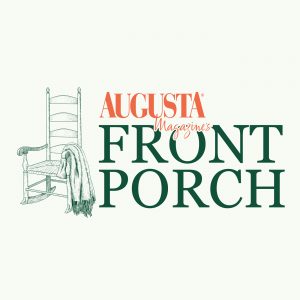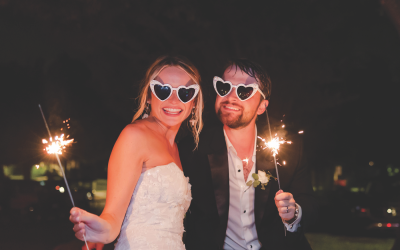How far has Kevin Kisner come in a year’s time?
THE AIKEN NATIVE has gone from toiling in relative anonymity on the PGA Tour to rubbing shoulders with, and beating, the game’s top players. He’s been paired with Masters champion Jordan Spieth and he played alongside Jason Day at the U.S. Open.
Witness his interaction with four-time major champion Rory McIlroy during last year’s FedEx Cup playoffs: Kisner’s nephew, Robbie, is a huge McIlroy fan and he asked if his uncle could get an autograph for him. A few weeks later, Kisner cashed in the request. McIlroy took off his glove and signed it, “To Robbie, I’m better than your Uncle Kevin. Rory McIlroy.”
Kisner, 32, was a standout junior golfer and went on to an All-American career at the University of Georgia. After some early success on golf’s mini-tour circuit, Kisner’s career stalled. He bounced back and forth between the PGA Tour and the Web.com Tour before making swing changes. That led to three runner-up finishes, all in playoffs, during the 2015 season before he won to solidify his spot among the game’s best.
“It’s kind of been weird how I’ve gone from one spectrum to the other and managed all that and figured that all out,” Kisner says. “This is the first year I can totally make my own schedule and not feel like I have to play if I don’t want to.” One stop Kisner definitely has penciled in is the first full week in April. He’s poised to become just the second
Aiken resident to ever compete in the Masters Tournament.
It’s appropriate that Kisner has deep ties to Palmetto Golf Club. He grew up playing both at Palmetto and Woodside Plantation as a junior and he now owns a home on the 17th fairway of Palmetto. The only other Aiken resident to play in the Masters, Bobby Knowles, was a Palmetto fixture. The career amateur competed in the Masters twice, in 1951 and 1952, but he wasn’t much of a factor. His best showing was a tie for 42nd.
According to Kisner’s father, his son met Knowles. “He may not remember it. He was just a little guy,” Steve Kisner says. “When we’d go to Palmetto to play, Bobby would be around.”
Knowles was the top player at Palmetto for decades, winning numerous club events while also keeping a high profile in national events.
Now, Kisner has assumed that role.
On weeks when he isn’t playing in an event, Kisner can be found hanging out at Palmetto. He and fellow PGA Tour regular Scott Brown both received honorary memberships to the club this past December and they use the club as their base for practice. When they’re in town, they often can be found on the practice putting green.
When their buddies come in for an informal game, Kisner is just one of the guys. He likes to needle them while also talking about the latest developments in the world of sports. “They’ve kind of found Aiken as home and love it,” Palmetto director of golf Brooks Blackburn says of Kisner and Brown. “I don’t see them going anywhere. They have the financial ability to go wherever they like. For them to choose Aiken and want to stay here, I think that’s special.”
It wasn’t too long ago that Kisner was busy cleaning carts and working for tips during Masters week. “It’s such a big deal here in Aiken,” Kisner says. “It’s always our spring break in school and this town kind of shuts down for the week.”

He tasted success early.
KISNER’S FAMILY didn’t have regular tickets, but he was able to go to the tournament thanks to the generosity of others.
Under the watchful eye of Woodside pro Jackie Seawell, Kisner was an eager student. He spent most of his waking hours during the summer months at the practice putting green when he wasn’t playing. “I always liked to play with the older kids because I tried to beat them and I was always so competitive,” Kisner says. “It was a cool way to grow up. Everyone was good, so you had to be good.”
Kisner was fearless and he wasn’t above challenging older, more experienced players. “He was actually so small he dragged the putter to the putting green,” Aiken resident Bill Hardy recalls. “He came up on the putting green and said, ‘Mr. Hardy, I’m putting you for a quarter a hole.’ I said, ‘The heck you are, go on back to the clubhouse.’”
The young Kisner’s propensity for the friendly games didn’t sit well with his mother. “That used to be a bone of contention with me,” Christy Kisner says. “Steve thought that was okay, at 8 years old, to gamble on the putting green. Finally, as much as I think of Jackie Seawell, I said ‘Jackie, I can’t grasp this betting. I just don’t understand that.’ He said he’s never going to get any better unless he puts some money on it.”
Kisner racked up wins in real competition as well and by the time he left South Aiken High School he was the top recruit in the state. When it came time to choose a college, Kisner once again took a different path. Instead of going in-state, he chose Georgia. “I went to Athens on a recruiting trip and fell in love with it,” Kisner says.
Kisner became Georgia’s first four-time All-American, even though he never won a college event as an individual. In his junior year, he helped the Bulldogs win the team portion of the NCAA Championship.
He knew that he wanted to pursue a career as a professional, and that’s what he did after graduating in 2006. While most mini tour players either run out of money or patience, that wasn’t an issue for Kisner. He tasted success early.
There were blips along the way—missing his PGA Tour card by a single shot at the 2009 qualifying tournament—but still he persevered. He won on the Web.com Tour in 2010 and that gave him his first full season on the PGA Tour.
Kisner wasn’t in awe of his competition at golf’s toughest level, but he lost his card after two mostly mediocre seasons. He went back to the Web.com Tour for 2013 and, even though he won in early March, he knew he needed to make a change. It also gnawed at him that many of his former teammates at Georgia were beginning to excel on the PGA Tour. “The guys you felt comfortable playing against and with had success, so you knew you had the game to do it too,” Kisner says. “But it’s still such an individualized sport, that’s the coolest thing about our sport. You’ve got to go do it and there’s only one person you can blame if you don’t.”
He began working in 2013 with little-known instructor John Tillery, who also coached Kisner’s pal Brown. Kisner and Tillery became buddies in a hurry and the hard work began to pay off. “He came up with a plan to fix my ball striking and we stuck to it,” Kisner says. “We haven’t changed the plan in three years. We’re still working toward it.” υ
Fast-forward to April 2015
KISNER BEGAN THE SEASON WELL OUTSIDE THE TOP 10 and the automatic invitations to top-shelf events like the majors and World Golf Championship tournaments. Nothing suggested the meteoric rise that was to come for him, yet Tillery was seeing progress. In fact, he thought his pupil could win at Harbour Town the week after the Masters. “He basically sat me down and said you need to be in the mindset that you need to go down there and win,” Kisner recalls.
Kisner didn’t win the RBC Heritage, but he came darn close. A final-round 64 put him in a playoff with veteran Jim Furyk and Kisner lost on the second playoff hole. Instead of being discouraged by the close call, Kisner used the performance as a springboard for the best year of his professional career. Three weeks after Harbour Town, he found himself in a three-man playoff at the Players Championship against Rickie Fowler and Sergio Garcia.
Against his more famous competition, Kisner didn’t back down. “My whole life I’ve been a gambler type and that whole deal. I love competing, trying to beat people,” Kisner says. “That’s what that whole moment’s about, trying to beat the guy beside you.”
Kisner missed winning outright by a whisker and in the playoff he battled Fowler head to head. Garcia was eliminated after the three-hole aggregate playoff and that left Kisner and Fowler headed to the island par-3 17th at TPC Sawgrass. Fowler had already birdied the hole twice that day and he struck for a third time to finally beat Kisner.
Immediately after the playoff loss at the Players, Kisner headed for Camden, S.C. He and fellow pro Boo Weekley enjoyed some fishing and hunting on a plantation owned by Kisner’s brother-in-law. He was surprised that his party was still awake when he rolled in at 2 a.m. from Florida. “We had a big time and everyone got to chill out,” Kisner says. “That’s the way I like to decompress is to go out there and go to a place where my phone doesn’t work, so I don’t have to deal with that other stuff. We just hung out and had a great time.”

“I just came out hitting great shots…”
Like golf, Kisner took up hunting because of his father. He’s been visiting his brother-in-law’s plantation for nearly 20 years and in the winter he went duck hunting with former PGA Championship winner David Toms. “To tell the truth, I’d just as soon go ride around in the country and hang out with the guys as much as hunting,” he says.
The golf season, however, was just beginning to heat up. Kisner continued to impress with top-10 finishes and posted his best finish in a major at the U.S. Open. At the Greenbrier, he lost in a playoff for the third time in a season.
The close calls kept moving him up on the money and world ranking lists, but left some wondering if he would ever break through. He earned his first Masters invitation by finishing among the top 30 money leaders and he checked off another career milestone in November.
Playing at the RSM Classic at St. Simons Island, Ga., in November, Kisner earned his first PGA Tour victory in front of a huge gathering of family and friends. “I just came out of the gate playing great, shot 7-under the first day and didn’t really make as many putts as I did on Sunday,” Kisner says. “If I’d made putts the first two days I’d really had a low week. But to win a PGA Tour event by six shots, come on, what else can you ask for?”
Kisner’s success can also be traced to stability on the home front. He and wife Brittany have a daughter, Kate, who will turn 2 this summer. It was Kate who stole the show at Kisner’s victory in St. Simons. After sinking his final putt on the 18th green, he was greeted by his daughter. He scooped her up as she clapped her hands.
“Having them around and traveling with me full-time, you understand the time wasted you can no longer do that,” Kisner says. “You have to be on top of your time management and do a lot of quality practice instead of quantity. You have to know you’re at the golf tournaments to get your work done and you have to get home and be a father and a husband.”
While some wives might be resentful of the time spent away from home, Kisner’s father says that isn’t the case with him. “I don’t think there’s any question that his wife has been very helpful,” Steve Kisner says “His golf game’s continued to improve since he got married. She’s very good for Kevin in that she’s understanding for what it takes for him to be on the golf course.”
In a year’s time, Kisner has gone from being a rank-and-file member of the PGA Tour to an elite player with full command of his career. He will play in all the majors and World Golf Championship events and he could represent his country in the Ryder Cup and the Olympics later this year.
Now Kisner enters the first full week of April and the tournament that meant the most to him growing up in the shadow of Augusta National. It’s been 64 years since an Aiken resident played in the Masters. “We don’t want to make it that long again,” Kisner says with a laugh. “Hopefully I can play well, continue to play well and keep getting into the tournament.”
This article appears in the April 2016 issue of Augusta Magazine.






